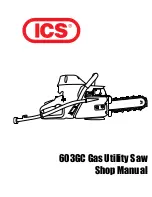
English
6
c. If battery liquid gets into your eyes, flush them with clean
water for a minimum of 10 minutes and seek immediate
medical attention. (
Medical note:
The liquid is 25-35%
solution of potassium hydroxide.)
•
Charge the battery packs only in D
E
WALT chargers.
•
DO NOT
splash or immerse in water or other liquids.
•
Do not store or use the tool and battery pack in locations
where the temperature may reach or exceed 105°F (such as
outside sheds or metal buildings in summer).
DANGER:
Electrocution hazard. Never attempt to open the
battery pack for any reason. If battery pack case is cracked or
damaged, do not insert into charger. Electric shock or electrocution
may result. Damaged battery packs should be returned to service
center for recycling.
NOTE:
Battery storage and carrying caps are
provided for use whenever the battery is out of the
tool or charger. Remove cap before placing
battery in charger or tool.
WARNING: Fire hazard. Do not store or
carry battery so that metal objects can contact
exposed battery terminals.
For example, do not place battery in
aprons, pockets, tool boxes, product kit boxes, drawers, etc., with
loose nails, screws, keys, etc. without battery cap.
Transporting
batteries can possibly cause fires if the battery terminals
inadvertently come in contact with conductive materials such
as keys, coins, hand tools and the like.
The US Department of
Transportation Hazardous Material Regulations (HMR) actually
prohibit transporting batteries in commerce or on airplanes (i.e.,
packed in suitcases and carry-on luggage) UNLESS they are
properly protected from short circuits. So when transporting
individual batteries, make sure that the battery terminals are
protected and well insulated from materials that could contact them
and cause a short circuit.
The RBRC™ Seal
The RBRC™ (Rechargeable Battery Recycling
Corporation) Seal on the nickel-cadmium battery (or
battery pack) indicates that the costs to recycle the
battery (or battery pack) at the end of its useful life
have already been paid by D
E
WALT. In some areas,
it is illegal to place spent nickel-cadmium batteries in the trash or
municipal solid waste stream and the RBRC program provides an
environmentally conscious alternative.
RBRC™ in cooperation with D
E
WALT and other battery users, has
established programs in the United States to facilitate the collection
of spent nickel-cadmium batteries. Help protect our environment
and conserve natural resources by returning the spent nickel-
cadmium battery to an authorized D
E
WALT service center or to your
local retailer for recycling. You may also contact your local recycling
center for information on where to drop off the spent battery.
RBRC™ is a registered trademark of the
Rechargeable Battery Recycling
Corporation.
Important Safety Instructions for
Battery Chargers
SAVE THESE INSTRUCTIONS:
This manual contains important
safety instructions for battery chargers.
•
Before using charger, read all instructions and cautionary mark-
ings on charger, battery pack, and product using battery pack.
DANGER:
Electrocution hazard. 120 volts are present at
charging terminals. Do not probe with conductive objects.
WARNING:
Shock hazard. Do not allow any liquid to get inside
charger.
CAUTION:
Burn hazard. To reduce the risk of injury, charge only
D
E
WALT nickel cadmium rechargeable batteries. Other types of bat-
teries may burst causing personal injury and damage.
CAUTION:
Under certain conditions, with the charger plugged in
to the power supply, the exposed charging contacts inside the








































